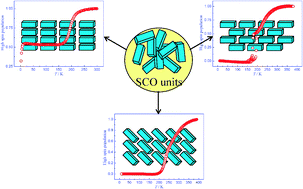Polymorphism in spin-crossover systems
Abstract
The occurrence of spin-crossover (

* Corresponding authors
a
State Key Laboratory of Physical Chemistry of Solid Surfaces & College of Chemistry and Chemical Engineering, Xiamen University, Xiamen 361005, P. R. China
E-mail:
taojun@xmu.edu.cn
Fax: 86 592 2183047
Tel: 86 592 2188138
The occurrence of spin-crossover (

 Please wait while we load your content...
Something went wrong. Try again?
Please wait while we load your content...
Something went wrong. Try again?
J. Tao, R. Wei, R. Huang and L. Zheng, Chem. Soc. Rev., 2012, 41, 703 DOI: 10.1039/C1CS15136C
To request permission to reproduce material from this article, please go to the Copyright Clearance Center request page.
If you are an author contributing to an RSC publication, you do not need to request permission provided correct acknowledgement is given.
If you are the author of this article, you do not need to request permission to reproduce figures and diagrams provided correct acknowledgement is given. If you want to reproduce the whole article in a third-party publication (excluding your thesis/dissertation for which permission is not required) please go to the Copyright Clearance Center request page.
Read more about how to correctly acknowledge RSC content.
 Fetching data from CrossRef.
Fetching data from CrossRef.
This may take some time to load.
Loading related content
